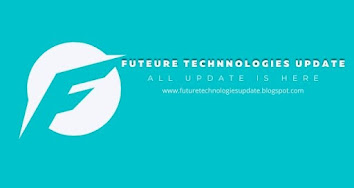Industrial
automation-Technology Behind automated factories
 |
| What is Industrial Automation |
What is Industrial Automation?
Industrial Automation was first proposed by
Ford. It is a model for automating the operational processes of the
manufacturing industry. On this basis, we can further subdivide into two levels
of industrial automation: the automation of manual labor, and the automation of
information processing and decision-making.
Automation of manual labor
Since the concept of automation was first
proposed to the present day, most of the automation we call is the automation
of physical labor, and most of the work categories of manual labor are usually
highly repetitive and independent. , that is, technically speaking, this type
of labor is the easiest to automate.
However, even from a technical point of
view, we have been able to greatly replace manual labor through industrial automation
technology, but is this economical?
The answer is...Maybe. There are two main
factors behind the automation of factories that limit their potential, changing
consumer demands and increasing product complexity. In terms of time, consumers
now want more – the same product has better functions, more functions, and even
more personalization; replacement is faster – to continuously cater to
consumers’ needs. In terms of taste, the industry frequently launches new
products, which greatly shortens the previous product cycle.
 |
| Industrial Automation |
So why do these two factors limit the potential of
automation?
Starting from consumer demand, if the
industry wants to keep up with the changing tastes of consumers, the existing
production lines must also be constantly updated. However, the construction
cost of an automated production line is very large, so the industry may only
completely automate several fields that belong to the core business category
(Ever-Green Product), or more upstream industries, will go bolder in the automated
production line.
The second is product complexity. As the
product complexity increases, the difficulty of automation becomes more
difficult. However, the current technology has not yet reached a turning point,
allowing the industry to reasonably introduce automation technology.
However, as the technology of Industry 4.0
matures, these problems we encounter in automating manual labor are gradually
being solved. For example, additive manufacturing, human-machine collaboration,
and the Internet of Things allow us to better handle complex production
processes and meet consumer demand.
Automation of Information Processing and Decision Making
This stage has been in the past ten years,
and it has grown significantly with the advancement of artificial intelligence
technology. Looking at the framework of ten degrees of automation proposed by
Sheridan and Verplank, in recent years, computers have also gained more and
more decision-making power in the stages of acquiring data, analyzing data,
establishing decisions, and implementing decisions.
As long as operators can understand the
entire data strategy process and combine relevant technologies and
technologies, they can build a highly automated Industry 4.0 factory in this
modern age with abundant resources.
 |
| Industrial Automation |
Industrial Controllers: Past, Present, and Future
Since the advent of programmable logic
controllers (PLCs), various automation controllers have migrated into
industrial applications, including programmable automation controllers (PACs)
and today's edge programmable industrial controllers (EPICs). Competition among
leading controller suppliers has intensified as users have more choice in terms
of cost, footprint, input/output (I/O) density, Fieldbus compatibility,
communications, programming capabilities, and processing speed.
For the market, diversity is often
beneficial, but it can also be frustrating for engineers and end-users.
Choosing a control platform is a long-term investment with associated costs
such as training and support contracts. Policymakers want to get their money's
worth for the money they put in.
But before expressing support for the
issue, it's better to take a look at how the industry is developing. What are
the driving forces behind the development trends of different control
solutions? How do these trends work now? How will users invest in automation in
the future to ensure success?
Figure 1: Thanks to decades of technology
integration, today's edge controllers can provide multiple I/O capabilities,
multiple communication interfaces, and embedded HMI and programming
capabilities. Image credit: Opto22
 |
| Industrial Automation |
Evolution Mode of Industrial Controllers
Studying the advancements in the
field of automation and control over the past few decades can see how some
iterations of specific technologies are driving the development of new I/O and
control functions.
For example, when the first I/O
systems were developed, field control and sensing equipment also relied on
electromagnetic and pneumatic components, which were limited by physical
properties that affected their useful life. Compact low-voltage components such
as solid-state relays are driving users to demand more options for integrating
I/O directly into their systems. This led to the emergence of the first modular
I/O, and at the same time, electronics companies brought high-tech computing
into the mainstream. The sensitive electronics in these systems require
external I/O to interact with the real world. This is the first serially
addressable I/O rack, which is an alternative to rack-based I/O in PLCs.
From dedicated, independent I/O
devices to modular I/O, to bus I/O, the multiplexing concept in industrial
automation control is reflected. Next-generation control platforms incorporate
embedded I/O processing circuitry. The module has expanded from 1 I/O channel
to 32 channels, and now I/O is built into PLC and other single equipment. In
some cases, with proper configuration, each I/O channel can accept a variety of
different signal types.
This model shows how innovation
spreads across the industry: over time, individual innovations become modular,
partner with other technologies, and then embedded within those technologies as
part of an innovation cycle.
For PLCs and PACs, this mode provides
smaller controllers and I/O modules. Greater computing power is achieved
"per square inch" as math and programming processor functions are
integrated directly into control boards and other devices such as I/O,
transmitters, and network gateways. Over time, the same pattern is reflected in
the migration of new embedded communication interfaces and protocol standards
to controllers.
Fusion of different technologies
The trend of convergence is
intertwined with the integration cycle, and technological innovations outside
the industrial control market are gradually entering the controller. Looking at
the history of bus I/O, you can see how this trend has led to the development
of new controller functions.
From serial bus I/O, there are
parallel I/O buses and other solutions that allow mini and microcomputers to
interact with I/O. This also inspired the idea of ​​developing a
stand-alone I/O communication processor, which separates the I/O from the
computer, allowing any computer with a communication port to interact with it.
As I/O modules and processors
improved, early hybrid controllers also provided analog signal processing
capabilities that were only available in distributed control systems (DCS) at
the time. Since the original purpose of ladder logic programs (a PLC
programming language) was not to handle analog data formats, this led to the
creation of a new programming language for hybrid controllers.
Then, low-cost alternatives to the
IBM PC began to flood the market. Since the PC is the primary control function
of the hybrid system, reliability concerns have arisen. It was significant for
the supplier to develop an industry-hardened alternative that combined the I/O,
networking, and programming components of earlier hybrid solutions into a single
system that would later become a PAC system. PACs use the same processor as a
PC and can provide a feature set that fills a niche between low-cost, PLC-based
discrete control and high-cost, DCS-based process control.
Innovations in high-tech enterprises
and the personal computer market have brought opportunities for the development
of industrial controls. This trend is starting to accelerate with the
increasing convergence of the operational technology (OT) and information
technology (IT) domains. Take, for example, the wave of mobility solutions that
have emerged in recent years. It's also reflected in the push to support big
data, cloud analytics, and machine learning, technologies born outside the
realm of industrial automation.
 |
| Industrial Automation |
Future-proof controller
As the trend toward deeper technology
integration, greater convergence between industries, and greater connectivity
between devices and systems continue, what will the controllers of the future
bring us?
How should engineers choose to ensure
they can stay current with technology and help the business get the most out of
it? The following 3 suggestions help manufacturers choose the right control
technology to achieve their goals.
1. Focus on design, not function
Knowing that technology will continue
to improve over time and become more tightly integrated and embedded, it makes
sense to prioritize investments in control systems that cannot change easily or
quickly. Engineers need to emphasize the architecture of the control system,
not some of today's eye-catching features.
2. Look for external innovations
If engineers design systems that can
evolve to keep pace with digital transformation, reducing maintenance and
rework, it can impress end users, who will remember that the technology that
determines the future often comes from outside the industry.
3. Keep an open mind
The battle for proprietary technology
market share hinders innovation, while support for open standards opens up
possibilities for everyone. Connectivity is one of the target metrics of
Industry 4.0, and as connectivity increases, engineers need to invest in
technologies that can create opportunities for disparate systems to work
together.












No comments:
Post a Comment